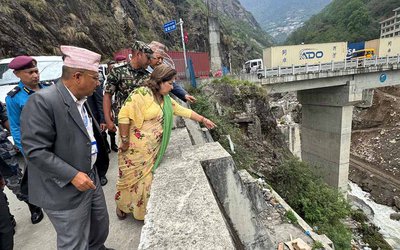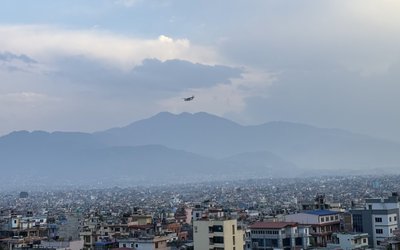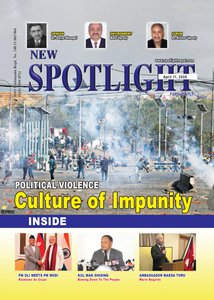The recent flood in Kathmandu, Lalitpur and other districts of Nepal, particularly caused by high intensity continuous rain of more than three days was brutal and highly devastating to human lives and properties in the country. Growing impact of climate change is one key reason behind this extended high intensity rain, which has topped records of many years. About 250 lives are already lost and 16000 plus families are affected while damage to basic and critical infrastructures and services is huge. Approximately 5000 houses are fully damaged and similar number of houses are found partially destroyed. More than ten thousand households are displaced due to this disaster whereas 17000 are rescued as well. As per the initial estimation, the damage and losses in different sectors are as follows (Nrs-Arab): Road- 2.55, Water Supply-3.55, Energy-4.0, Irrigation-2.0, Agriculture and Livestock-6.0). These figures are expected to rise as we go into detailed assessments. On the eve of holy festivals like Dashain, Tihar and Chhath, majority of roads linking to different regions and districts are either partially swept away or are severely damaged by flood and landslides, causing long jams and hence making road travel risky and uncertain. This situation has also impacted the flow of goods and services entering Kathmandu, causing unwanted price hike and scarcity of supplies and commodities in the local market. There is no denying that the opportunity cost of this disaster is mammoth.
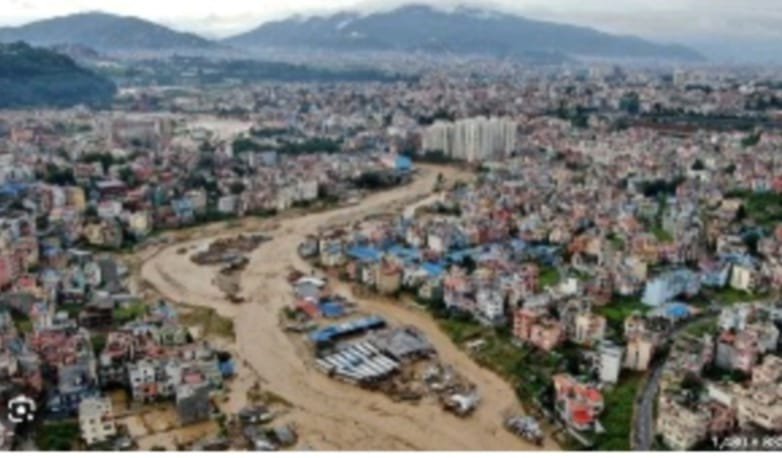
Every disaster is also an opportunity, provided we learn and act on our weaknesses and work and strengthen on missing links and prevailing gaps. It is therefore important to look back and question, why we struggled and suffered such a huge loss (both human and material), in-spite of a clear and categorical alert, four days in advance from the Department of Hydrology and Metrology (DHM) Nepal. The weather forecast was specific and explicit, which also suggested to stop night buses of all routes and few valuable tips to local farmers. Thanks to the team of DHM, who are very prompt and accurate with their forecast in recent time. However, as the situation evolved, it was strongly felt that the communication of alert was not very effective and result oriented. The alert was taken modestly, and thus no efforts were put towards strengthening preparedness. We need to work further on this agenda to expand the outreach of the alerts and touch the last mile i.e. the most vulnerable local populations in the field.
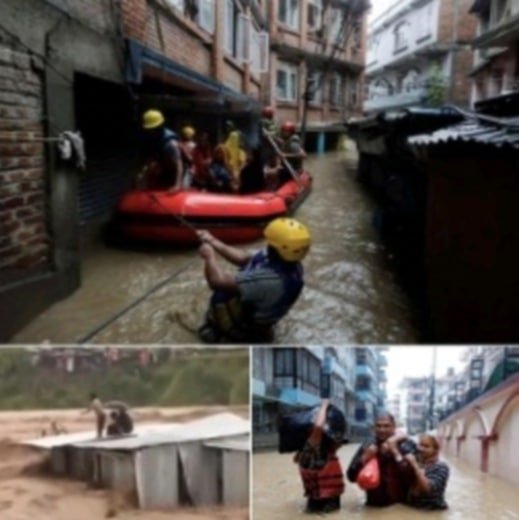
Unfortunately, in this case, the role of National Disaster Risk Reduction and Management Authority (NDRRMA), which is a dedicated government institution of this field, is not found very proactive and forceful. In principle, NDRRMA is an advisor to the government and more particularly to the Ministry of Home Affairs and the office of the Prime Minister. The authority should have shared the early warning (alert) issued by the DHM to both MOHA and PMO office and briefed about the potential implications including necessary control measures and actions to be taken on the ground. Further, the authority should have guided and supported MOHA in taking and implementing appropriate decisions, releasing orders, coordinating with key agencies and stakeholders (provincial and local governments, CDO, Security forces, department of road, bus and transport association and others), deploying security forces, DRRM officials and logistics and securing timely enforcement of all the decisions and orders on the ground. Regrettably, all these did not happen as just explained above. Surprisingly, the disaster response division of MOHA was also not found very effective in this situation. This was a pricey lapse in the part of concerned government machineries. As a result, the volume of damage and loss of both human lives as well as infrastructures and properties are incredibly high and to great extent, this was avoidable (particularly loss of human lives).
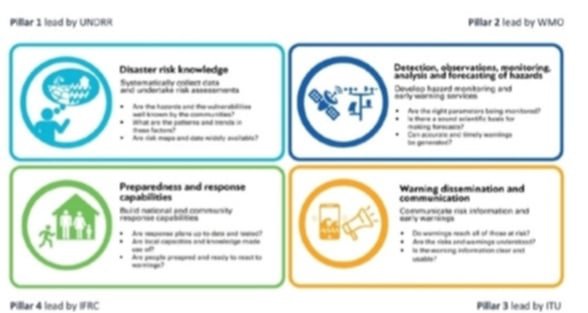
In a nutshell, there was ‘Early Warning’ but there was very limited ‘Early Action’ on the ground. We were unable to activate and implement Early Action Protocols, which was essential in such an emergency environment. This situation exposed many weak areas of our disaster preparedness and timely and coordinated response in the field. As suggested by UN-DRR, early warning system (EWS) has four key pillars/elements and it will only work
effectively, if all the four pillars are simultaneously active, operational and contributing to the system. In this recent disaster, this was not the case as the links between the pillars were found loose and weak. This may be the classic example of need of more comprehensive and robust ‘end to end’ Early Warning System.
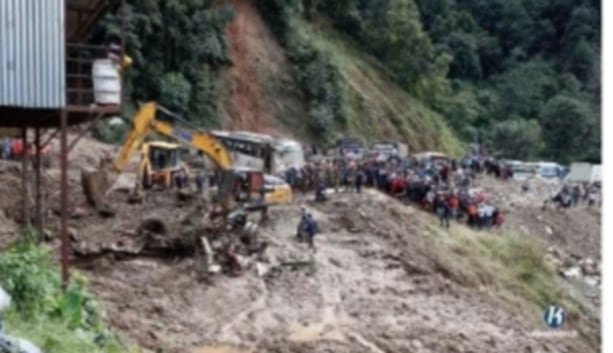
There were many instances where we struggled in the middle of Kathmandu and Lalitpur districts. Our inability to rescue a family from the rooftop in Nakhu khola even in five hours, shows serious gaps in timely coordination and appropriate actions by the DRM agencies available in town. It is interesting to note here, why people living along the rivers and kholas were not relocated to any safe shelters (at-least till alert period) following the weather alert issued by the DHM. In-spite of difficult time, security forces (31,731 personnel mobilized) were very prompt and supportive, however they were also found in shortage of appropriate training and skills in areas of search and rescue, and emergency response. This is one area where we need to think seriously and urgently and make necessary arrangements to build dedicated force (like National Disaster Response Force/NDRF in India), exclusively to support disaster preparedness and emergency response in the country.
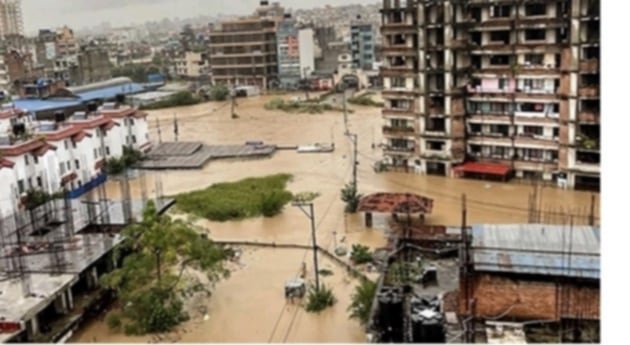
With this widespread damage and losses, it is not difficult to say that the localization of disaster risk reduction and management in the country is yet at very primary stage and thus demands more investments and sustained efforts. The capacity at provincial and local levels is ordinary since the majority of DRRM related activities are limited to and around Kathmandu Valley. As per the Local Government Operation Act and also DRRM Act, local governments are now responsible for all phases of DRRM. In this case, there is no option than to train and capacitate local governments to be the competent first responder in the field. This agenda needs to be prioritized and thus efforts and investment in DRRM should be further decentralized. Besides, the integration of DRRM concept into sectoral development through sectoral ministries and departments is still at very primary level. As a result, our infrastructure and services are not risk sensitive and resilient. We need a strong push here and a more coordinated and collaborated move and commitment to practice, ‘whole of a government’ and ‘whole of a society’ approach. Poorly regulated and haphazardly developed cities will only invite disasters, which will not be manageable anymore in future. The implementation of Building Code and Risk Sensitive Land-use Plan should be expedited without any further delay. All the above gaps are very much reminded by the recent flood and landslides in Kathmandu Valley and other various districts in Nepal. The lessons learned from this recent disaster cannot be ignored; rather, it should guide and help in prioritizing the future course of DRRM actions in the field.
Dr. Karna is an Urban Governance and DRR Specialist,The author can be reached at sumankarna@hotmail.com
Note- Photos are taken from the Internet.
- The NDRRMA's Role In Building Disaster Resilience: Why Leadership Matters
- Mar 07, 2025
- Building Climate Resilient Infrastructures - Way To Minimize Disasters Induced Damages And Losses
- Jun 21, 2023
- An Overview Of Early Warning System (EWS) In Nepal- How Inclusive And Resilient To Communities At Risk
- Oct 14, 2022
- Mainstreaming DRR And CCA Into Development Approaches- Indispensable To Secure SDGs Gains
- Jun 27, 2022
- Urban Resilience- A Growing Concern Of Urbanizing Nepal
- Aug 13, 2020







